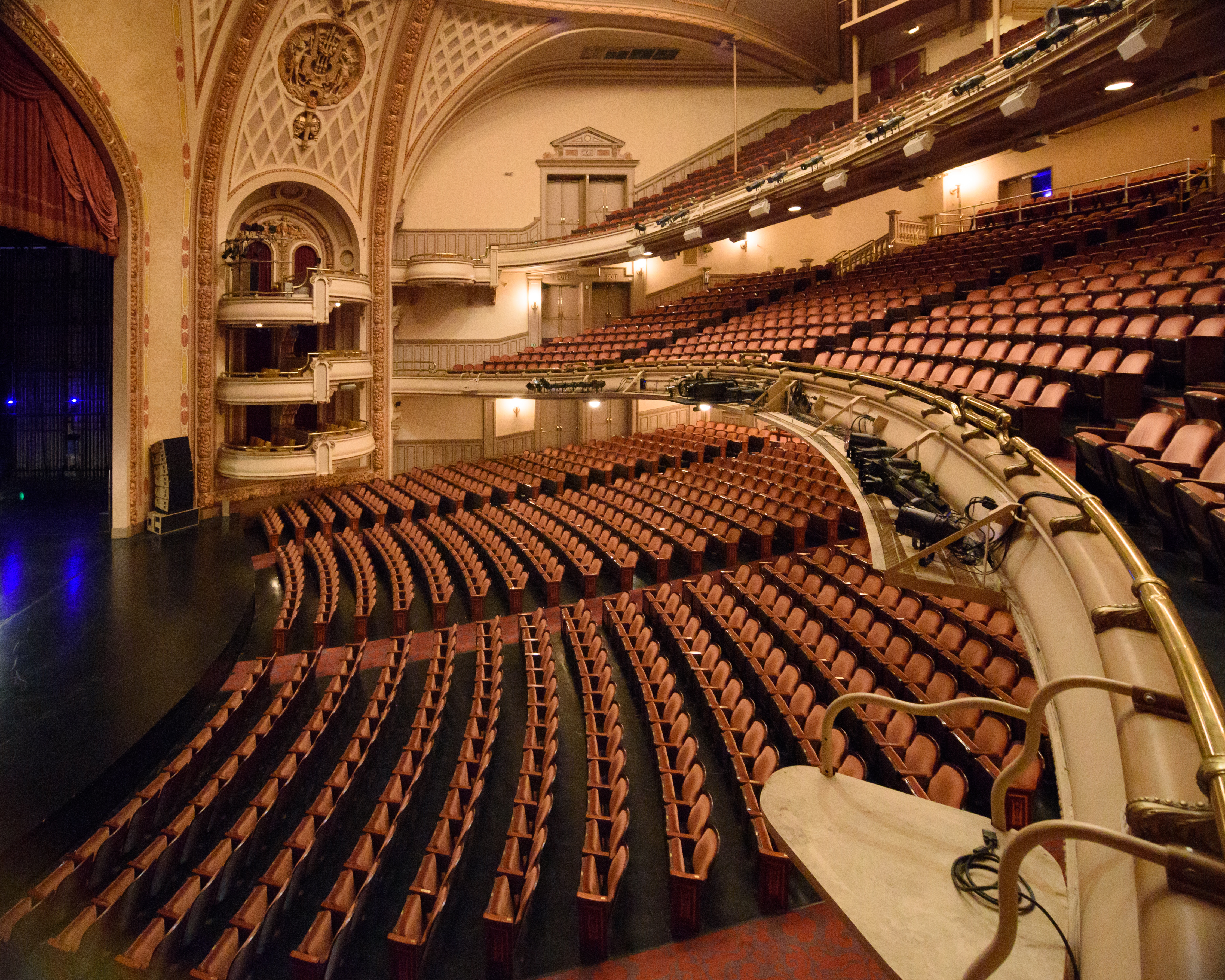|
Grand Opera House (Brooklyn)
The Grand Opera House was a theatre in Brooklyn, New York that was in operation from 1881 through 1920. The theatre was demolished in 1924 along with several adjacent buildings to make room for the A. I. Namm & Son Department Store. History The Grand Opera House was built by the firm of Barry, Fay & Lewis; a partnership which consisted of theatrical impresario Benjamin Lewis (died 1905), and Irish comedic actors Hugo Fay and Billy Barry. The theater was constructed at 14 Elm Place,Del Valle, p. 184 on the west side of the street just south of Fulton Ave.Harrison, p. 21 It was built on the former site of the Congregational Church on Elm Pl. which had been destroyed by fire in June 1880. The Grand Opera House was inaugurated on Monday, November 14, 1881, with a performance of ''Muldoon's Picnic''. Seating 2,000 people, at the time it opened it was the second largest theatre in Brooklyn; with only the Brooklyn Academy of Music surpassing its size. The theatre was purchased by the fir ... [...More Info...] [...Related Items...] OR: [Wikipedia] [Google] [Baidu] |
Brooklyn, New York
Brooklyn () is a borough of New York City, coextensive with Kings County, in the U.S. state of New York. Kings County is the most populous county in the State of New York, and the second-most densely populated county in the United States, behind New York County (Manhattan). Brooklyn is also New York City's most populous borough,2010 Gazetteer for New York State United States Census Bureau. Retrieved September 18, 2016. with 2,736,074 residents in 2020. Named after the Dutch village of Breukelen, Brooklyn is located on the western portion of Long Island and shares a border with the borough of Queens. It has several bridge and tunnel connections to the borough of |
The Standard Union
The ''Brooklyn Times-Union'' was an American newspaper published from 1848 to 1937. Launched in 1848 as the ''Williamsburgh Daily Times'', the publication became the ''Brooklyn Daily Times'' when the cities of Brooklyn and Williamsburg were unified in 1855. The newspaper supported the then-progressive Republican Party, and the Abolition movement. Walt Whitman was one of their reporters, and was later the managing editor after he left the ''Brooklyn Daily Eagle''. The paper was published both daily and on Sunday, and had a peak circulation that included all of Kings County, and large segments of Nassau and Suffolk Counties. As the ''Brooklyn Daily Times'', the paper was published in various editions, including the Long Island, Wall Street, and Noon editions. The ''Daily Times'' was renamed the ''Brooklyn Times-Union'' after it bought out the ''Brooklyn Standard Union'' in 1932, and was itself bought out by the ''Brooklyn Eagle'' in 1937. Brooklyn's Times Plaza at the intersec ... [...More Info...] [...Related Items...] OR: [Wikipedia] [Google] [Baidu] |
The Brooklyn Union
''The'' () is a grammatical article in English, denoting persons or things that are already or about to be mentioned, under discussion, implied or otherwise presumed familiar to listeners, readers, or speakers. It is the definite article in English. ''The'' is the most frequently used word in the English language; studies and analyses of texts have found it to account for seven percent of all printed English-language words. It is derived from gendered articles in Old English which combined in Middle English and now has a single form used with nouns of any gender. The word can be used with both singular and plural nouns, and with a noun that starts with any letter. This is different from many other languages, which have different forms of the definite article for different genders or numbers. Pronunciation In most dialects, "the" is pronounced as (with the voiced dental fricative followed by a schwa) when followed by a consonant sound, and as (homophone of the archaic pro ... [...More Info...] [...Related Items...] OR: [Wikipedia] [Google] [Baidu] |
Brooklyn Academy Of Music
The Brooklyn Academy of Music (BAM) is a performing arts venue in Brooklyn, New York City, known as a center for progressive and avant-garde performance. It presented its first performance in 1861 and began operations in its present location in 1908. The Academy is incorporated as a New York State not-for-profit corporation. It has 501(c)(3) status. Katy Clark became president in 2015 and left the institution in 2021. David Binder became artistic director in 2019. History 19th and early 20th centuries On October 21, 1858, a meeting was held at the Polytechnic Institute to measure support for establishing "a hall adapted to Musical, Literary, Scientific and other occasional purposes, of sufficient size to meet the requirements of our large population and worth in style and appearance of our city." [...More Info...] [...Related Items...] OR: [Wikipedia] [Google] [Baidu] |
Hyde And Benham
Hyde and Behman, was an American theatre firm that was owned and operated by Brooklyn-based impresarios Richard Hyde (1856-1912) and Louis C. Behman (1855-1902). They owned several theaters in the cities of Philadelphia, Brooklyn, and Baltimore from the 1870s into the early part of the 20th century. Through their theatre chain, they programmed new stage works that made innovative contributions to the art forms of burlesque and vaudeville Vaudeville (; ) is a theatrical genre of variety entertainment born in France at the end of the 19th century. A vaudeville was originally a comedy without psychological or moral intentions, based on a comical situation: a dramatic compositio .... Two of their many theaters in Brooklyn were the Grand Opera House, and the Hyde & Behmans Theater. References {{theatre-stub Theatre-owning companies American theatre managers and producers Entertainment companies based in New York City ... [...More Info...] [...Related Items...] OR: [Wikipedia] [Google] [Baidu] |
Klaw And Erlanger
Klaw and Erlanger was an entertainment management and production partnership of Marc Klaw and Abraham Lincoln Erlanger based in New York City from 1888 through 1919. While running their own considerable and multi-faceted theatrical businesses on Broadway, they were key figures in the Theatrical Syndicate, the lucrative booking monopoly for first-class legitimate theaters nationwide. Klaw and Erlanger joined in partnership in 1888. Starting from the purchase of an existing booking agency, the partners gradually gained control of the southern territory, anchored in New Orleans. They ran allied businesses, produced Broadway shows, and owned a number of theaters. They were part owners of the new Iroquois Theater in Chicago, which suffered a catastrophic fire in 1903 that resulted in more than 600 deaths and brought Klaw & Erlanger bitter criticism. In the same year they opened their flagship New Amsterdam Theater in New York, where the Aerial Gardens became the longtime stage f ... [...More Info...] [...Related Items...] OR: [Wikipedia] [Google] [Baidu] |
The Shubert Organization
The Shubert Organization is a theatrical producing organization and a major owner of theatres based in Manhattan, New York City. It was founded by the three Shubert brothers in the late 19th century. They steadily expanded, owning many theaters in New York and across the country. Since then it has gone through changes of ownership, but is still a major theater chain. History The Shubert Organization was founded by the Shubert family, Shubert brothers, Sam S. Shubert, Lee Shubert, and Jacob J. Shubert of Syracuse, New York – colloquially and collectively known as "The Shuberts" – in the late 19th century in upstate New York State, New York, entering into New York City New York, often called New York City or NYC, is the most populous city in the United States. With a 2020 population of 8,804,190 distributed over , New York City is also the most densely populated major city in the U ... productions in 1900. The organization produced a large numb ... [...More Info...] [...Related Items...] OR: [Wikipedia] [Google] [Baidu] |
Theatres In Brooklyn
Theatre or theater is a collaborative form of performing art that uses live performers, usually actors or actresses, to present the experience of a real or imagined event before a live audience in a specific place, often a stage. The performers may communicate this experience to the audience through combinations of gesture, speech, song, music, and dance. Elements of art, such as painted scenery and stagecraft such as lighting are used to enhance the physicality, presence and immediacy of the experience. The specific place of the performance is also named by the word "theatre" as derived from the Ancient Greek θέατρον (théatron, "a place for viewing"), itself from θεάομαι (theáomai, "to see", "to watch", "to observe"). Modern Western theatre comes, in large measure, from the theatre of ancient Greece, from which it borrows technical terminology, classification into genres, and many of its themes, stock characters, and plot elements. Theatre artist Patrice ... [...More Info...] [...Related Items...] OR: [Wikipedia] [Google] [Baidu] |
1881 Establishments In New York City
Events January–March * January 1– 24 – Siege of Geok Tepe: Russian troops under General Mikhail Skobelev defeat the Turkomans. * January 13 – War of the Pacific – Battle of San Juan and Chorrillos: The Chilean army defeats Peruvian forces. * January 15 – War of the Pacific – Battle of Miraflores: The Chileans take Lima, capital of Peru, after defeating its second line of defense in Miraflores. * January 24 – William Edward Forster, chief secretary for Ireland, introduces his Coercion Bill, which temporarily suspends habeas corpus so that those people suspected of committing an offence can be detained without trial; it goes through a long debate before it is accepted February 2. * January 25 – Thomas Edison and Alexander Graham Bell form the Oriental Telephone Company. * February 13 – The first issue of the feminist newspaper '' La Citoyenne'' is published by Hubertine Auclert. * February 16 – ... [...More Info...] [...Related Items...] OR: [Wikipedia] [Google] [Baidu] |
1920 Disestablishments In New York (state)
Nineteen or 19 may refer to: * 19 (number), the natural number following 18 and preceding 20 * one of the years 19 BC, AD 19, 1919, 2019 Films * ''19'' (film), a 2001 Japanese film * ''Nineteen'' (film), a 1987 science fiction film Music * 19 (band), a Japanese pop music duo Albums * ''19'' (Adele album), 2008 * ''19'', a 2003 album by Alsou * ''19'', a 2006 album by Evan Yo * ''19'', a 2018 album by MHD * ''19'', one half of the double album '' 63/19'' by Kool A.D. * ''Number Nineteen'', a 1971 album by American jazz pianist Mal Waldron * ''XIX'' (EP), a 2019 EP by 1the9 Songs * "19" (song), a 1985 song by British musician Paul Hardcastle. * "Nineteen", a song by Bad4Good from the 1992 album ''Refugee'' * "Nineteen", a song by Karma to Burn from the 2001 album ''Almost Heathen''. * "Nineteen" (song), a 2007 song by American singer Billy Ray Cyrus. * "Nineteen", a song by Tegan and Sara from the 2007 album '' The Con''. * "XIX" (song), a 2014 song by Slipknot ... [...More Info...] [...Related Items...] OR: [Wikipedia] [Google] [Baidu] |
Demolished Buildings And Structures In Brooklyn
Demolition (also known as razing, cartage, and wrecking) is the science and engineering in safely and efficiently tearing down of buildings and other artificial structures. Demolition contrasts with deconstruction, which involves taking a building apart while carefully preserving valuable elements for reuse purposes. For small buildings, such as houses, that are only two or three stories high, demolition is a rather simple process. The building is pulled down either manually or mechanically using large hydraulic equipment: elevated work platforms, cranes, excavators or bulldozers. Larger buildings may require the use of a wrecking ball, a heavy weight on a cable that is swung by a crane into the side of the buildings. Wrecking balls are especially effective against masonry, but are less easily controlled and often less efficient than other methods. Newer methods may use rotational hydraulic shears and silenced rock-breakers attached to excavators to cut or break through wo ... [...More Info...] [...Related Items...] OR: [Wikipedia] [Google] [Baidu] |

.png)


.jpg)


